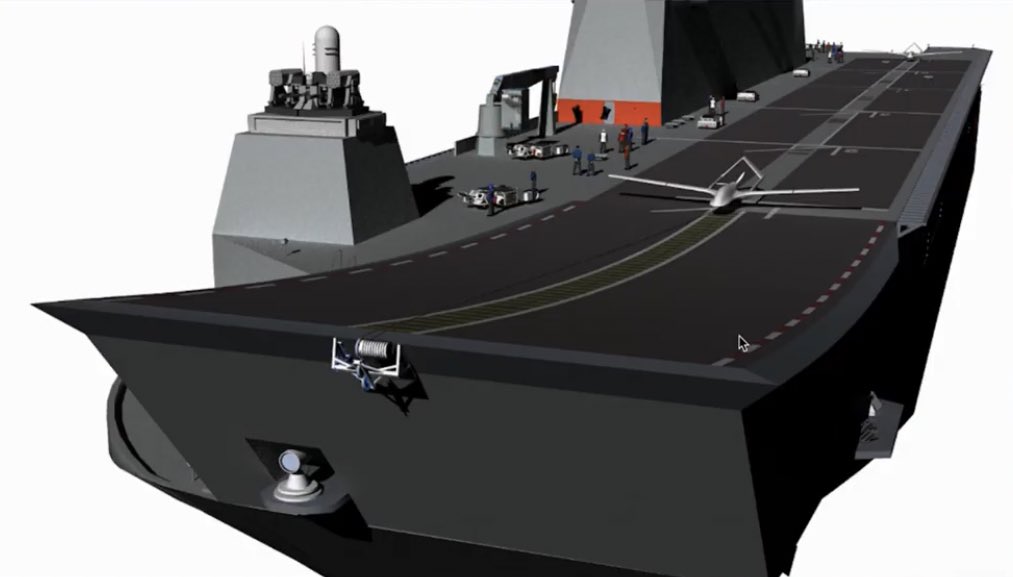we can not at the mpment on anadolu LHD,there is no catapult system on it,
"Minor level" structural changes will take place on the ship deck (sad but necessary), officials say. And I think TCG ANADOLU is now evaluated as a mother ship, not only for armed UAVs but also with more efficient use of unmanned surface platforms(like ULAQ) in a sense, within the concept of unmanned/combined amphibious assault.
Besides, the aforementioned unmanned aircraft and unmanned surface platforms have very low displacement(for boats) or MTOW(aircraft) values. We can simply assume that the TB-3 system will be a navalised and structural reinforced tactical armed UAV with a wingspan of 11-13 meters, with an average MTOW value of 1 / 1.5 tons. The catapult/launch system that will accelerate such an aircraft over a 100-120-meter take-off line, for example over 70-80 kt, should be a problem that can be solved mechanically and not too complicated.
If you ask me; the real problem is not with the TB-3. The single-line flight deck of this ship may be an obstacle in the operation of fixed-wing aircraft, limiting the maximum sortie/day capacity. It is necessary to consider this not with the ISR-weighted and +24 hour mission planning of the current tactical UAVs, but within all the air element requirements that the Amphibious(or naval air support) operation will require. More precisely, it could mean that the take-off and landing operations cannot be done with sufficient efficiency and speed. I have some ideas for that of course, but let's see what kind of innovation we will see about it. In any case, the integration of tactical armed UAVs(which have very low take-off and stall speed values) can be achieved to some extent. However, turbofan engine UAVs such as Goksungur(?); How these high-subsonic vehicles can land on this ship is yet a mystery.
Perhaps a complete redesign of the flight deck of the second ship and therefore its flight operations, may come to the fore. Briefly, a kind of (lite) electromagnetic launch solution(if the power management of the ship makes possible) and a separated landing line can be considered. (If ship's main design -derivated Navantia Athlas 26000- is suitable for dozens of factors that are structurally to hydrodynamically which I dont have knowledge in detail.) When the second ship is put into service, the first ship could pulled into a dry dock, for the necessary modernization.
I regret to say that, but our proverb "Kervan yolda düzülür" (I guess it can be translated as "make it up as you go along") has become our national project model. The LPD project, (Maybe our Pakistani friends here do not know, but yes, the project started as an LPD procurement program) which we talked about 10 years ago, has turned into a kind of unmanned amphibious assault ship concept, which will be the first of its kind today. Just like the big changes or breaks in this story, today we are again evolving a ship whose flight operations capabilities were designed directly with the F-35 in mind(this time an almost finished ship) into something else. And the sister of this ship will probably be a highly differentiated platform in light of these experiences.









